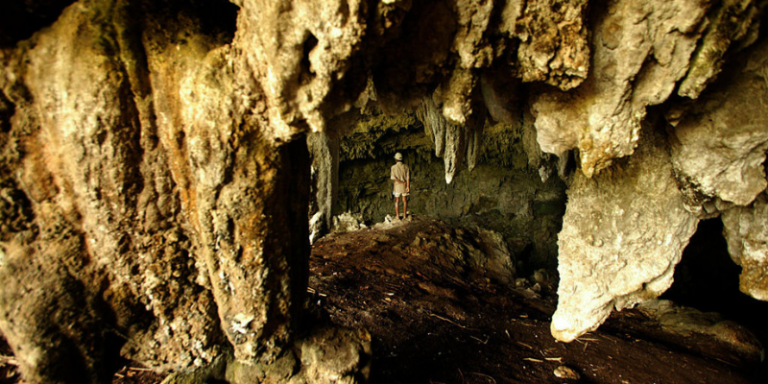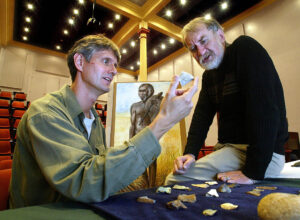Ancient Human Species Discovered
How many human species have there been?
By: Kelli Ballard | November 13, 2019 | 405 Words

A local villager inspects one of the caves where bones of the species Homo floresiensis were found. (Photo by Fairfax Media via Getty Images/Fairfax Media via Getty Images via Getty Images)
A new species of ancient human has been found, exciting scientists and changing perceptions on human evolution. The researchers found 13 bones that date back to about 67,000 years ago. The bones come from at least three separate individuals and were discovered in the sediment of a cave. They have been labeled a new species of human: Homo luzonensis.
The Homo luzonensis
The fossils were found in Callao Cave on the island of Luzon, in the Philippines. Aside from the fact that a new species has been discovered, scientists are baffled that ancient humans somehow made it onto islands when it was thought they didn’t have seafaring skills at that time in history. Researchers had first realized this possibility when Homo floresiensis fossils were found in 2004, also on an island.
Besides the location of the fossils, the finding is interesting due to the size of the remains, which suggest the people to whom the bones belonged were short of stature, much like Homo floresiensis. Professor Philip Piper from the Australian National University said the teeth were really small and that “[t]he size of the teeth generally – though not always – reflect the overall body-size of a mammal, so we think Homo luzonensis was probably relatively small too.”

(Photo by Fairfax Media via Getty Images/Fairfax Media via Getty Images via Getty Images)
The Homo floresiensis, whose remains were discovered on the island of Flores in Indonesia, are sometimes referred to as “hobbits” or “dwarves” because of their small stature, and this new humanoid discovery has some of the same characteristics.
Many researchers theorize that ancient humans didn’t have the skills to build boats and cross seas, so how did these species manage to get to islands? Some suggest it was purely by accident, that perhaps a storm caught people living along the coast by surprise and swept them out to sea, depositing them on an island.
The two most recently discovered humanoid species, found on separate Southeast Asian islands, have raised many questions. How did they get there? Were they more advanced than researchers thought, or were they victims of accidents that tossed them along the waves to their new island homes? Were the ancient humans on Flores and Luzon related somehow? Or, are they separate species that each succumbed to island dwarfism? Although we don’t know yet, new studies and discoveries may soon provide the answers.
















